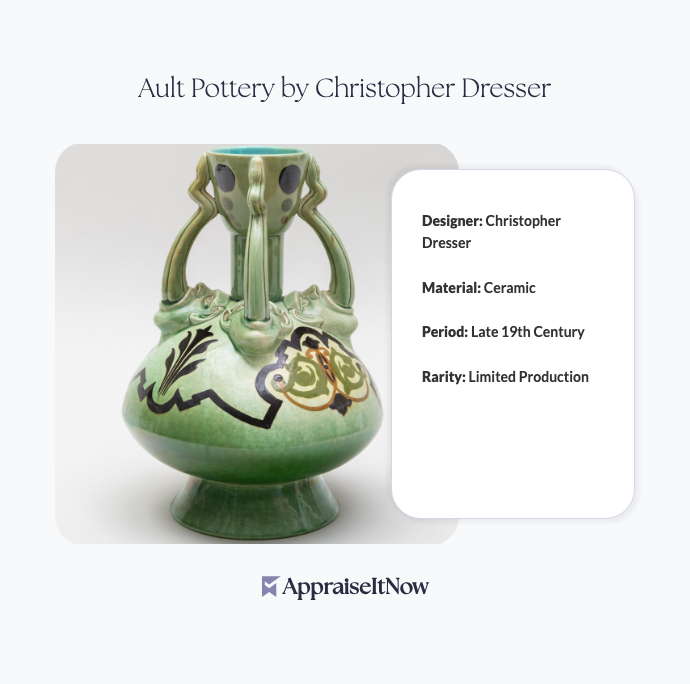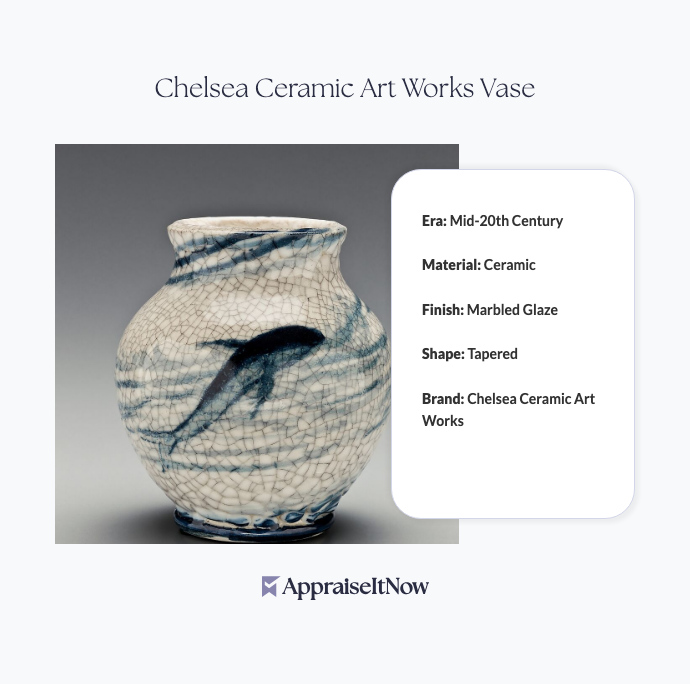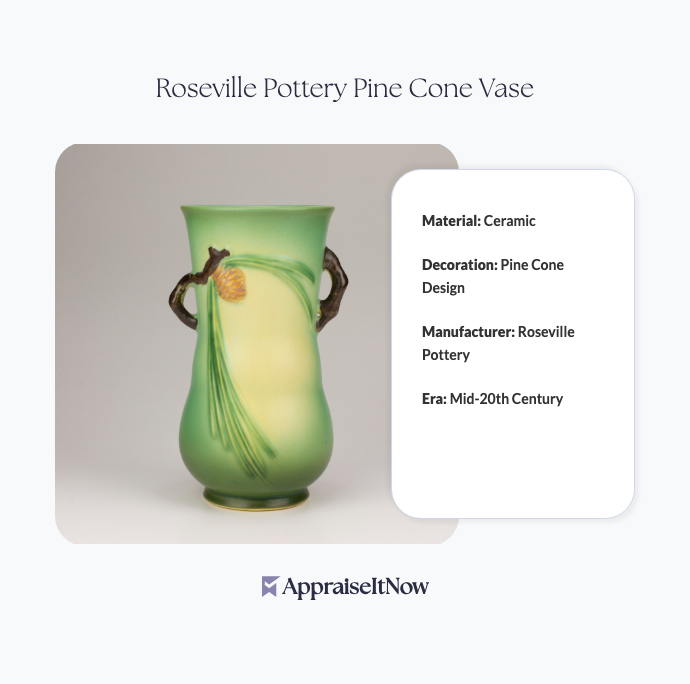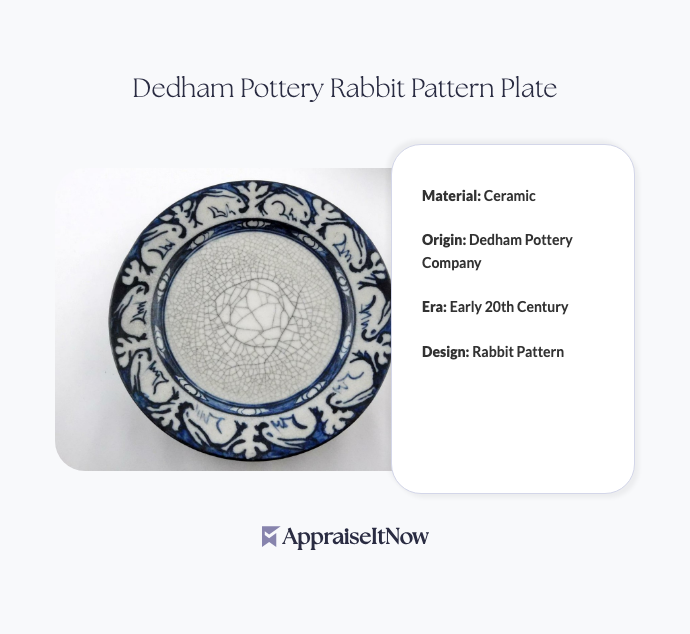<h1>How to Get Your Ault Pottery by Christopher Dresser Appraised</h1>
<p>Ault Pottery pieces designed by <strong>Christopher Dresser</strong> represent some of the most coveted British ceramics of the Victorian era, commanding market values between <strong>$1,500 and $3,500</strong> for quality examples. If you've inherited one of these elegant household goods or discovered a piece at an estate sale, understanding the appraisal process ensures you accurately value this important design artifact.</p>
<h2>Understanding Ault Pottery's Market Value</h2>
<p>Christopher Dresser was a pioneer of the Aesthetic movement in the late 19th century, and his work at Ault Pottery—beginning in 1885—exemplifies his revolutionary approach to combining functional design with visual beauty. The pieces he created weren't mere decorative objects; they represented a deliberate philosophy that everyday household items deserved exceptional craftsmanship and innovative aesthetics.</p>
<p>What makes Ault Pottery particularly valuable? The collection features distinctive characteristics including rich glazes, intricate patterns, and elegant silhouettes that distinguished Dresser's vision from his contemporaries. These weren't mass-produced wares—Ault Pottery items were created in limited quantities, making them increasingly scarce and desirable among collectors. When you're evaluating your piece, understand that you may be holding one of relatively few surviving examples from over a century ago.</p>
<p>The current market positions Ault Pottery within the broader context of <a href="/types/antique-artwork">antique ceramics and decorative arts</a>, where provenance, condition, and design significance drive valuation. Professional appraisers specializing in <a href="/blog/appraisals-for-fine-porcelain-and-ceramics-valuing-delicate-artistry">fine porcelain and ceramics</a> can accurately position your piece within this $1,500–$3,500 range based on specific attributes.</p>
<h2>Key Factors That Influence Your Ault Pottery's Value</h2>
<h3>Identifying Authentic Pieces and Manufacturing Details</h3>
<p>Understanding your Ault Pottery's specific characteristics is essential before seeking professional valuation. Dresser's designs for Ault featured distinctive glazing techniques and form innovations that reflected his industrial design philosophy. Authentic pieces display maker's marks or signatures, typically found on the base, that authenticate provenance and manufacturing period.</p>
<p>The pottery's production methods evolved during Dresser's involvement, creating variations that affect appraisal value. Earlier pieces from the mid-1880s through early 1890s represent the most significant design innovations and command higher collector premiums. If your piece features the typical Ault mark combined with Dresser attribution, this documentation becomes crucial during professional valuation.</p>
<h3>Condition Assessment and Restoration Impact</h3>
<p>The condition of your Ault Pottery fundamentally affects its market worth. Unlike some <a href="/types/antique-furniture">antique furniture</a> that can be refinished or restored relatively invisibly, ceramic pieces show any damage or repair work permanently. Professional appraisers examine for chips, cracks, hairline fractures, and previous restoration attempts, as each issue reduces value from the baseline estimate.</p>
<p>Original glazing in excellent condition typically commands full market value, while pieces with visible wear, repairs, or glaze loss may fall toward the lower end of the $1,500–$3,500 range. A piece with professional museum-quality restoration might retain 70-80% of value, whereas amateur repairs or visible cracks could reduce worth by 40-60%.</p>
<div class="callout tip"><p><strong>Condition Insight</strong></p>
<p>Never attempt home repairs on your Ault Pottery before professional appraisal. Documentation of original condition significantly impacts valuation accuracy.</p></div>
<h2>Determining If Your Pottery Is Valuable</h2>
<p>Many collectors wonder <strong>how to know if their pottery is valuable</strong>—a question that applies equally to Ault Pottery and other ceramic collectibles. Several indicators suggest your piece warrants professional evaluation. Ault Pottery specifically gains value through its combination of designer attribution (Dresser's name carries substantial weight in design history), limited production quantities, and the Aesthetic movement's increased appreciation among contemporary collectors.</p>
<p>Compare your piece against museum collections or established auction records. If your pottery displays sophisticated glazing techniques, innovative form design, or clear maker's marks, these all indicate potential collector value. The presence of the Ault Pottery mark combined with design sophistication suggests your piece likely falls within the $1,500–$3,500 valuation range or potentially higher for exceptional examples.</p>
<p>Questions like <strong>what are the most valuable pottery marks</strong> often lead collectors to their answers—certain manufacturers and designers command premium prices due to historical significance. Dresser's involvement with Ault Pottery places it among the more desirable marked ceramics, though individual piece values still depend on specific design, condition, and market timing.</p>
<h2>When and Where to Seek Professional Appraisal</h2>
<h3>Choosing the Right Appraiser for Ceramics and Collectibles</h3>
<p>Professional appraisers specializing in decorative arts and ceramics understand the nuanced factors affecting Ault Pottery valuation. When selecting an appraiser, verify credentials in ceramic or decorative arts appraisal—organizations like AAA, ISA, ASA, CAGA, and AMEA certify experts with demonstrated expertise in this field.</p>
<p>Your appraiser should have specific knowledge of the Aesthetic movement, Christopher Dresser's design principles, and Ault Pottery's manufacturing history. This specialized background ensures accurate condition assessment, authentication verification, and fair market value determination. Working with a USPAP-compliant appraiser provides documentation suitable for insurance purposes, estate planning, or potential sale transactions.</p>
<p>AppraiseItNow connects you with certified appraisers experienced in <a href="/types/household-goods">household goods</a> and <a href="/types/personal-property">decorative arts appraisals</a>. Our network includes experts who can evaluate your Ault Pottery in the context of current market demand and comparable sales data.</p>
<h3>Documentation You'll Need</h3>
<p>Before your appraisal appointment, gather relevant documentation about your Ault Pottery. This includes any acquisition history, previous appraisals, or provenance information. Photographs from multiple angles—showing maker's marks, glaze details, and any condition issues—help appraisers prepare and ensure thorough evaluation.</p>
<p>Understanding your pottery's origin story strengthens the appraisal process. If you inherited the piece, know which family member owned it and for how long. If purchased, retain any documentation from the seller or auction house. This information contributes to establishing authenticity and can explain why certain pieces command premium prices within the collector market.</p>
<div class="callout note"><p><strong>Market Insight</strong></p>
<p>Limited production Ault Pottery pieces with clear provenance and exceptional condition consistently achieve upper-range valuations ($2,500–$3,500), while pieces with condition issues or uncertain attribution may appraise at the $1,500–$2,000 level.</p></div>
<h2>The Broader Ceramics Collector Market</h2>
<h3>Distinguishing Ault Pottery from Other Ceramics</h3>
<p>When asking <strong>how to find out how much pottery is worth online</strong>, understanding what makes specific potteries valuable becomes essential. Ault Pottery occupies a distinctive position among Victorian ceramics because Christopher Dresser was a recognized design innovator, not merely a factory operator. This designer attribution significantly elevates value compared to unmarked or anonymously produced pottery of the same era.</p>
<p>Unlike production potteries such as Haeger (where collectors frequently ask <strong>is Haeger pottery worth anything</strong>), Ault Pottery represents limited-quantity, design-driven production. Haeger Pottery typically ranges from $50–$500 per piece depending on condition and age, whereas Ault Pottery's association with a prominent design figure and Aesthetic movement positioning justifies substantially higher valuations. This distinction matters when you're comparing your piece's potential value against other Victorian ceramics you might encounter.</p>
<h3>Understanding Vintage Pottery Classifications</h3>
<p><strong>What is considered vintage pottery?</strong> Generally, ceramics produced before 1970 qualify as vintage, though many collectors and appraisers reserve the term for pieces at least 30-40 years old. Ault Pottery, produced starting in 1885, clearly exceeds this threshold—your piece likely represents genuine antique rather than merely vintage collectible. This classification affects market demand and value positioning favorably for Ault examples.</p>
<p>Explore comprehensive resources on <a href="/blog/decoding-the-value-of-antique-furniture-materials-craftsmanship-and-historical-context">understanding antique furniture and decorative arts</a> to better understand how historical period, design significance, and manufacturing methods influence valuation across ceramic and decorative categories.</p>
<h2>Maximizing Your Appraisal Results</h2>
<h3>Preparation Strategies for Accurate Valuation</h3>
<p>Document your Ault Pottery thoroughly before the appraisal appointment. High-resolution photographs capturing maker's marks, glaze texture, form details, and any condition issues provide appraisers with essential visual information. If your piece has a documented exhibition history, prior appraisals, or auction records, compile this information for appraiser review.</p>
<p>Understanding the appraisal's purpose—whether for insurance, estate planning, or potential sale—helps direct the evaluation appropriately. USPAP-compliant appraisals suitable for insurance purposes require different documentation standards than valuations intended for auction house consignment. Communicate your specific needs clearly so your appraiser prepares the most useful documentation for your situation.</p>
<h3>Timing Considerations and Market Trends</h3>
<p>The current market for Aesthetic movement ceramics shows consistent collector interest, supporting stable valuations in the $1,500–$3,500 range. Victorian design has experienced renewed appreciation as contemporary collectors recognize the movement's influence on modern industrial design and craft philosophy. This favorable market timing makes now an appropriate moment for obtaining professional valuations, particularly if you're considering selling or need insurance documentation.</p>
<div class="callout tip"><p><strong>Appraisal Timing</strong></p>
<p>Update your appraisal every 3-5 years to reflect market changes and ensure insurance coverage accurately reflects current value. Ault Pottery has shown appreciation over time as collector awareness increases.</p></div>
<h2>Summary and Next Steps</h2>
<p>Your <strong>Ault Pottery by Christopher Dresser represents a valuable piece of design history</strong>, worth between <strong>$1,500 and $3,500</strong> depending on condition, specific design, and market demand. Professional appraisal transforms your ownership experience from uncertainty to confidence, providing certified documentation accepted by insurance companies, auction houses, and estate planners.</p>
<p>The process of determining your piece's value involves more than casual market research—it requires specialist knowledge of the Aesthetic movement, Christopher Dresser's design principles, and contemporary ceramic collector preferences. Working with certified appraisers experienced in <a href="/blog/appraisals-for-fine-porcelain-and-ceramics-valuing-delicate-artistry">decorative arts and fine ceramics</a> ensures accurate, defensible valuation that serves your financial and legal needs.</p>
<div class="callout note"><p><strong>Key Takeaway</strong></p>
<p>A certified appraisal of your Ault Pottery by Christopher Dresser provides professional documentation for insurance, sale, or estate purposes—giving you confidence that your valuable Victorian ceramic is accurately valued and properly protected.</p></div>







.avif)







